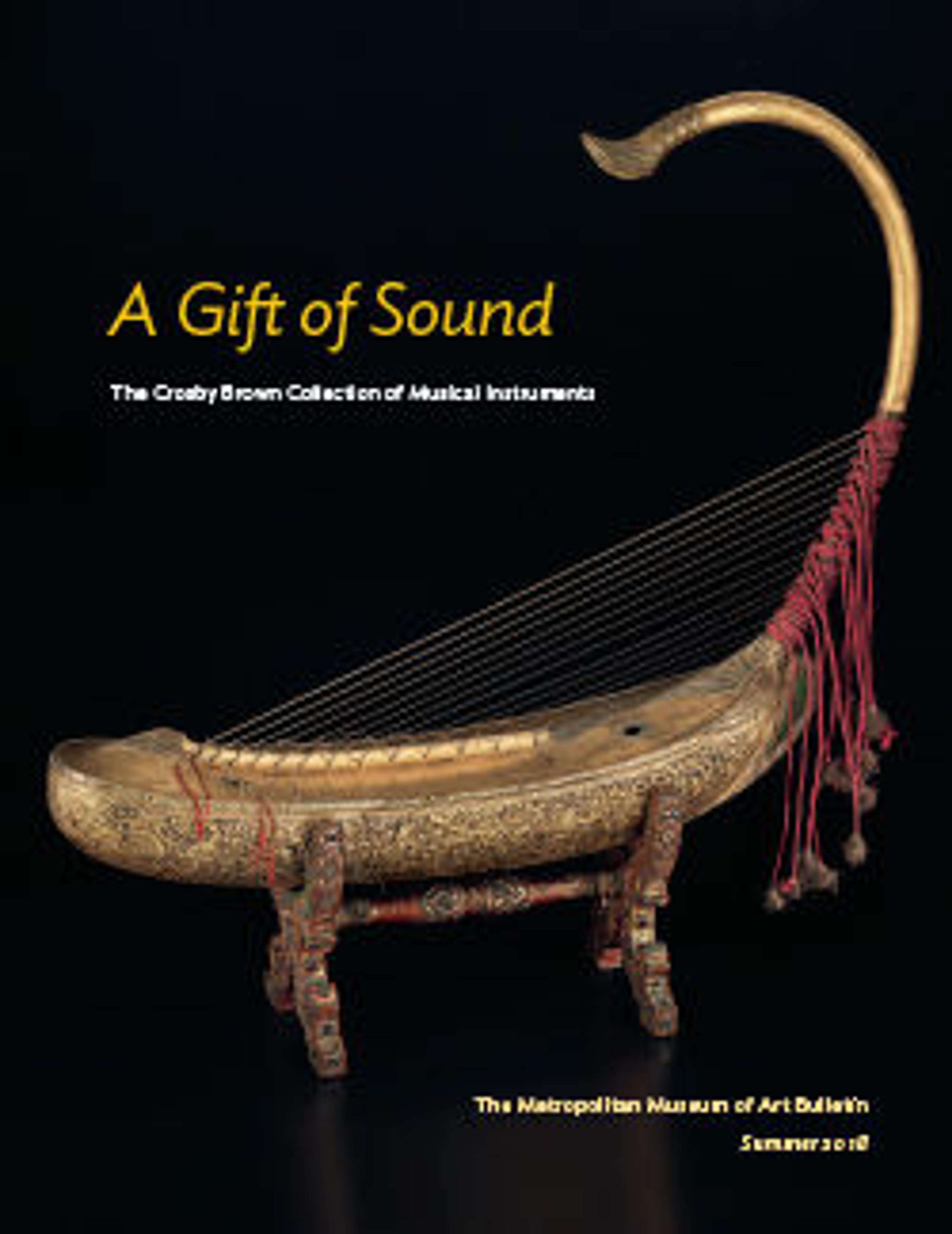O-daiko
O-daiko, a barrel drum played in temples, theater orchestras and at festivals. This unusually ornate o-daiko, with its cloisonné stand and body, was made by order of the Japanese government for the Vienna Exposition of 1873, the first in which Japan participated formally as a nation. The drum's cowhide skins, decorated with lacquer-work dragons were never sounded. Instead the drum is a symbol of peace as indicated by the presence of a rooster atop the instrument. An ancient story tells of a drum placed at a village gate to sound an alarm during an attack. As the years passed the drum was never used. Hens and roosters began to live in the drum and this image became an emblem of contentment and peace.
Artwork Details
- Title:O-daiko
- Maker:Attributed to Kodenji Hayashi (Japanese, Nagoya 1831–1915)
- Date:ca. 1873
- Geography:Tohshima, Aichi Prefecture, Japan
- Culture:Japanese
- Medium:Wood, metal, cloisonné, hide, silk, padding
- Dimensions:Total H. 62 3/16 × Drum diam 22 in. (158 × 55.9 cm)
- Classification:Membranophone-double-headed / barrel drum
- Credit Line:The Crosby Brown Collection of Musical Instruments, 1889
- Object Number:89.4.1236a–d
- Curatorial Department: Musical Instruments
More Artwork
Research Resources
The Met provides unparalleled resources for research and welcomes an international community of students and scholars. The Met's Open Access API is where creators and researchers can connect to the The Met collection. Open Access data and public domain images are available for unrestricted commercial and noncommercial use without permission or fee.
To request images under copyright and other restrictions, please use this Image Request form.
Feedback
We continue to research and examine historical and cultural context for objects in The Met collection. If you have comments or questions about this object record, please contact us using the form below. The Museum looks forward to receiving your comments.
